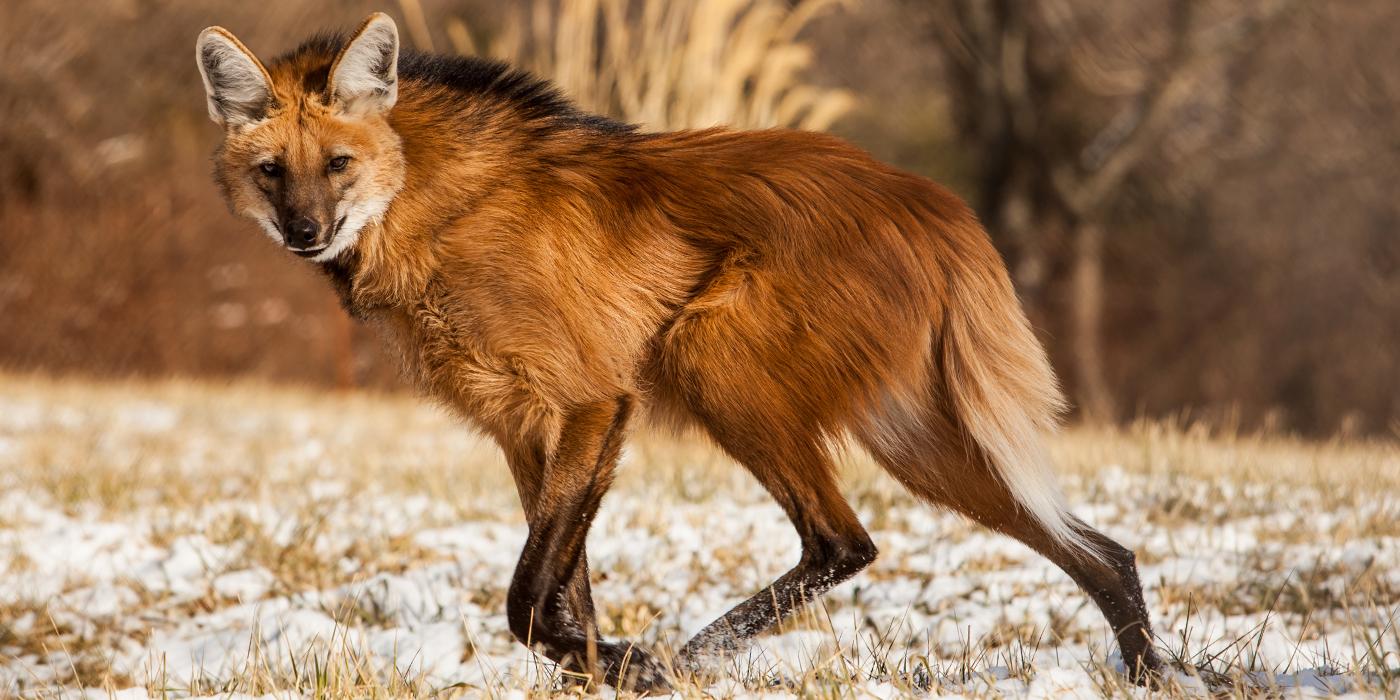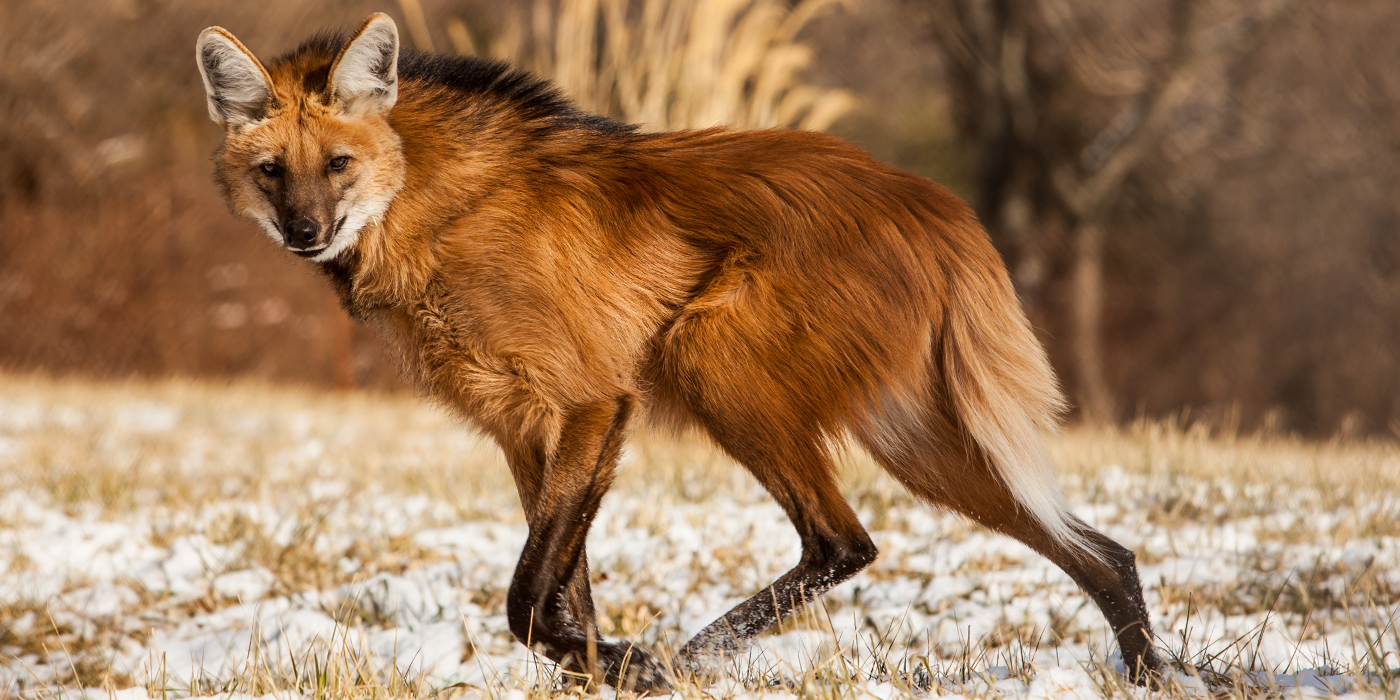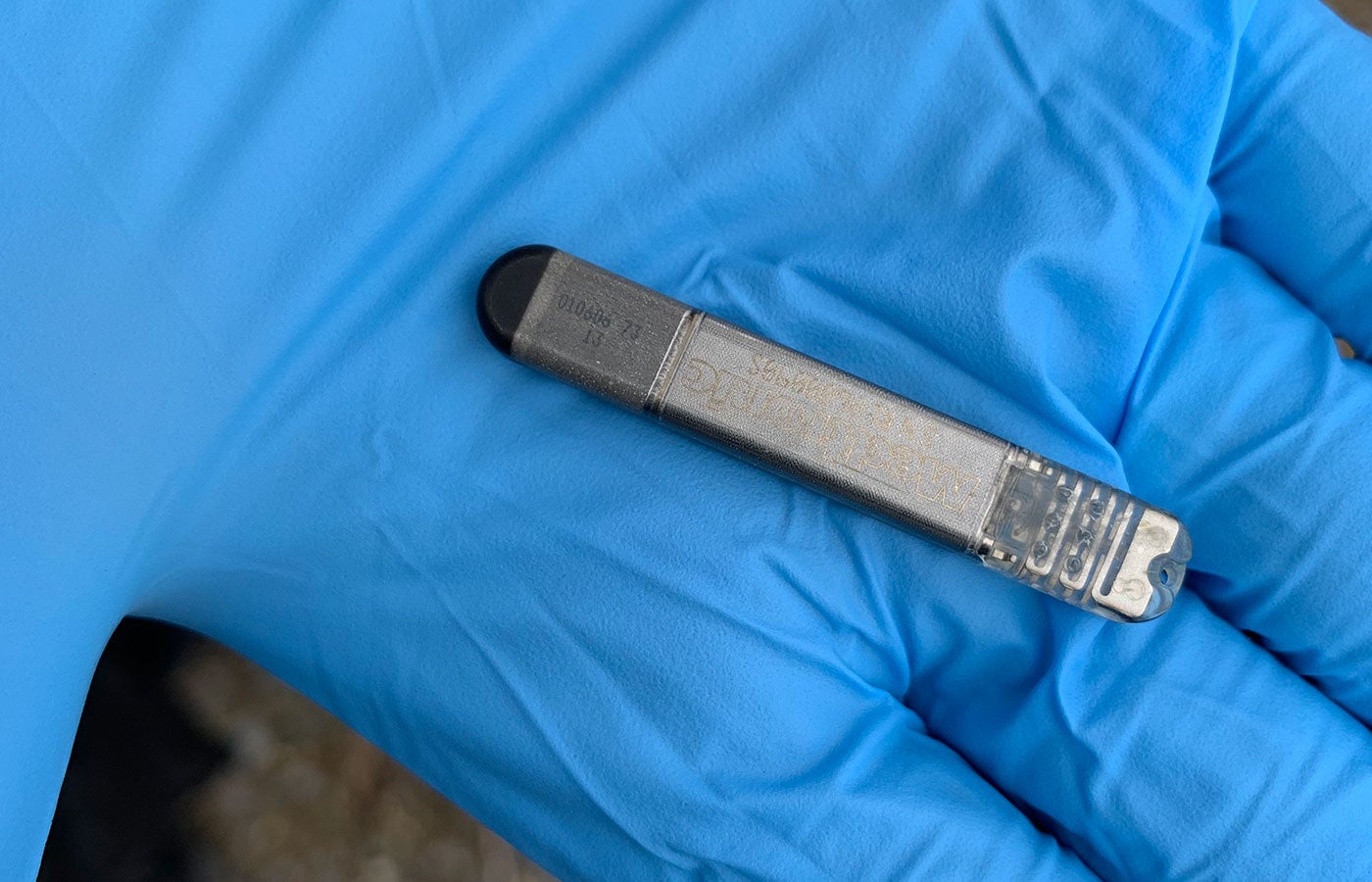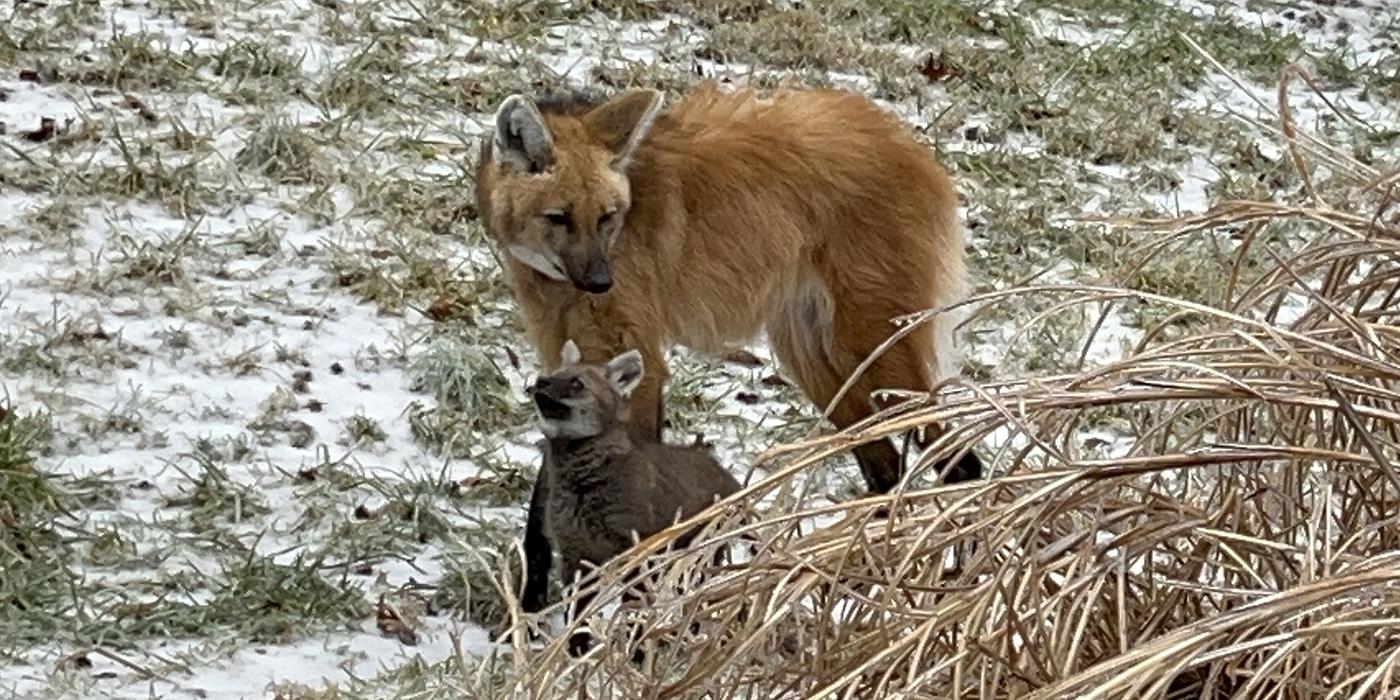A Heart to Heart with Maned Wolves


Spindly legs and thick, red fur have earned them the nickname “foxes on stilts,” but maned wolves are neither fox nor wolf. These charismatic canids are a unique species (the only members of the genus Chrysocyon) and are found solely in South America’s savannas, where Brazilian researcher Rosana Nogueira de Moraes has studied them for nearly 15 years.
In 2015, Moraes came across a study of wild black bears that used heart sensors to reveal what observation couldn’t — that the bears had a hidden stress response to drones flying overhead. She wondered what the same technology might reveal about maned wolves. Two years later, she helped launch the Rhythm of Life Project, a maned wolf heart rate monitoring study at the Smithsonian Conservation Biology Institute. Moraes shares the latest on the Rhythm of Life Project and what researchers have learned.
Why is it important to protect maned wolves?
Maned wolves are a “keystone” species because they provide critical ecosystem services. They keep pest populations under control by hunting small rodents, and they help disperse the seeds of native plants. Maned wolf poop can be full of the seeds of a tomato-like wild fruit that they love to eat. The fruit, called the wolf apple, is even named after them. Maned wolves are also great ambassadors for the conservation of the Brazilian Cerrado, one of the most threatened savanna biomes in the world.
What do you hope to learn by monitoring their heart rates?
Maned wolves are very secretive and shy animals, so they are good candidates to help us answer some important questions. How well do animals hide their “emotions?” Is behavior a good indicator of an animal’s internal response? And how does their heart respond to human presence or changes in the environment?
Heart rate is a result of the balance of activity in the autonomic nervous system — the part of the nervous system that automatically controls body functions, like blood flow and digestion. When an animal is excited or stressed, the system increases its heart rate to prepare for a fight-or-flight response. If an animal is calm, its heart beats much slower. So, by tracking heart rate, we can identify if situations have a positive or negative impact.
It becomes even more powerful when combined with other tools — like a daily report from animal care staff, a measurement of stress hormones from fecal (poop) samples, or a genetics report on the kind of microorganisms present in a maned wolf’s gut. These tools can inform us about levels of stress, but heart monitors can help us pinpoint the moment when stress occurs and find the cause.
How do you monitor a maned wolf’s heart?
We use heart monitors that were made for humans by Medtronic Inc, who donated the devices used for this project. The monitors weigh only 2.4 grams, and we place them under a maned wolf’s skin, over the heart area. The process is like injecting a dog with a microchip, but because the monitor is larger than a microchip, we need to make a small cut and then close it afterward with stitches. The monitor continuously senses each heartbeat or, more precisely, the electric current that comes from the heart when it beats. It records the average heart rate every 2 minutes and can last up to three years.

To read the data, we use a special computer and a handheld device that connects with the heart monitor via radio. The monitors are also equipped with a remote transmission system that can send data to a computer whenever a maned wolf rests near one of our “antennas,” which are set up near their dens.
How many maned wolves are you monitoring?
We care for 13 maned wolves at SCBI, and so far, we have monitored six of them — three males and three females. This is the first study of its kind for maned wolves, and we’ve collected more than 2.5 million points of heart rate data! Heart rates increased in response to people, restraint, loud noises (like lawn mowers) and social interactions with other wolves. Often, heart rates spiked in response to a negative experience, like being startled by the presence of a neighboring wolf in the middle of the night. They also increased when an animal was positively excited, like when a couple approached each other during the breeding season.
How can you tell if stress is positive or negative?
A good example in humans would be the body response of two different people riding a roller coaster. While one person could be very excited, the other could be extremely scared, or even sick, during the ride. Both people might have similar spikes in heart rate, but the stress would only be positive for the person with positive emotions. Since maned wolves can’t tell us how they feel, we use their behaviors, hormone measurements, and the magnitude of their heart rate increases to tell us when their stress is positive or negative. Some wolves like the presence of a familiar human and get excited when that person visits. We call that positive stress. Others might show a similar heart rate but a totally different behavior, such as avoiding the visitor, which is negative stress.
Has anything that you have learned so far surprised you?
I was fascinated by the wide range of heart rates, and the extremes that the maned wolf’s heart can reach. The heart rate ranges we found were very different from what was previously known. When maned wolves are asleep or resting, their heart rates can drop below 30 beats per minute. But they can have a 10-fold increase, reaching up to 330 beats per minute, when they are stressed. Those extremes normally last for just a few seconds.
I’m also amazed and genuinely happy to see how technology can help us learn so much about ourselves and about animals. The footage that we capture with our trail cameras at SCBI can be inspiring, enjoyable and even poetic at times. So, it’s fascinating to also capture what is happening inside an animal while they freely move and live their lives.
For example, we have videos of a maned wolf couple fighting across the fence when they were first introduced for the breeding season. In later images, the same pair is very playful and moving around together, as if “in love.” And the best part is that the heart monitors were capturing the changes in heart rate for all those moments!
How has heart rate monitoring helped support the care of maned wolves at SCBI?
Maned wolves are solitary animals, so living as a family group (parents and pups) might be stressful depending on the group’s size and how long they are together. Heart rate monitoring helped us identify that one of our male wolves was stressed while living with a female and their four pups — and confirmed that moving him to a new area solved the problem. We can also work with animal care staff to test if maned wolves respond positively to novel forms of enrichment.
The core of this project is the heart. As humans, we can understand that heart rate tells us a lot about our emotions and how we feel in each life situation. Since we don’t speak the “language” of animals, we need projects like this to better understand how they perceive their environments, so we can use that information to help them thrive.
How can this data support the conservation of maned wolves in the wild?
Only 3% of the natural habitat available for maned wolves in Brazil is inside protected areas. That means animals are also living in areas where encounters with humans, vehicles and farming machinery are common — and stress levels are higher. When sugar cane fields are harvested, for example, wolves can lose all their vegetation cover and food resources in less than 24 hours.
Having objective measurements of stress levels, and an understanding of where and how wolves move, could help us and land owners think about managing the land in ways that are more beneficial to wildlife. Our main goal is to become experts in the use of this technology, so we can apply it to the conservation of maned wolves and other endangered species in the wild. Studying the animals at SCBI has provided us with the skills we need, as well as the opportunity to overcome any obstacles in a controlled and safe environment.
What’s next for the Rhythm of Life Project?
This project is an excellent example of how much we can accomplish when we work as a team. We are physiologists, ecologists, biologists, veterinarians, animal care staff, students, donors, partners and more, all coming together to make this work possible. After a successful start, we’re expanding our scientific research at SCBI to other species, including eight scimitar-horned oryx. We proved that heart monitors can be safely used in maned wolves, and generated valuable information to compare with wild wolves. In 2021, we plan to start a field study with maned wolves in Brazil.
The Rhythm of Life Project was made possible with generous support from Medtronic.
Related Species:



